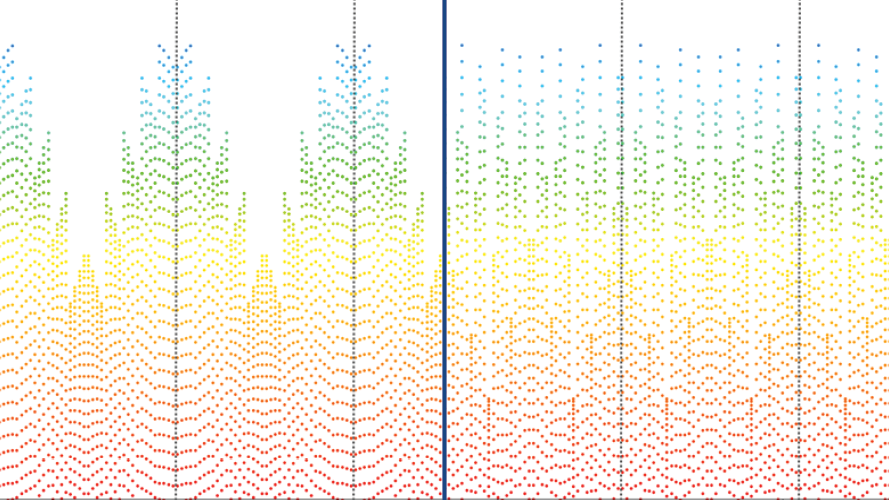Offset Sampling
Sufficient Near and Far Offset Coverage is Critical for Optimal Subsurface Imaging
Dense near-offset coverage improves shallow imaging resolution and computation of intercept and gradient terms during amplitude-based subsurface characterization studies.
- Flexible acquisition solutions enable better near and far-offset coverage
- Geometry diagnostics improve planning of near-offset coverage
- Far-offset requirements are commonly dictated by FWI requirements (and may be tested with FWI sensitivity kernels)
Leveraging Longer Offsets for Deeper Geological Imaging
Longer offsets can be beneficial to the imaging of deeper geology by improving the availability of high-angle reflections for amplitude-based reservoir property estimation and for the recovery of deep velocity model updates using diving wave information in Full Waveform Inversion.
The rule of thumb for diving wave FWI is that model updates can be recovered for depths in the range of one-sixth to one-third of the maximum offset recorded (and deeper updates can be recovered for the same offset range using reflection FWI), however, the maximum useful offset for diving waves is determined by the signal-to-noise ratio (SNR). If a representative vertical velocity function is available for the survey area, modeling of the FWI sensitivity kernels (see bottom image) is a more reliable indicator of FWI-based offset requirements.
Wide-tow multi-source solutions with as many as six sources laterally distributed over a distance as large as 350 m enable highly efficient large streamer spreads to be towed, whilst simultaneously acquiring a uniform near-offset distribution for all common midpoint (CMP) sublines.
Acquiring Long Offsets
Long offsets can be acquired in three robust ways, customized to the survey budget and imaging challenges:
- Long streamer tails: In an efficient single vessel acquisition, two or three of the streamers in a larger spread are up to 10 km long.
- Extended long offset (ELO): A conventional streamer and multi-source configuration is complemented by a second vessel (either source only or sources and streamers). The frequencies and spatial sampling may be tailored to the subsurface requirements.
- Combination towed & nodes: New OBN acquisition in an area of existing towed-streamer coverage. The maximum offsets recorded can be as large as logistically reasonable and as large as the signal-to-noise (SNR) of recorded diving wave events allow
Speak to a Specialist
Interested in a product demo or trial? Let us know your needs and we’ll connect you to the right person or team.
Book a Data Viewing
Want to see the latest seismic data solutions and imaging technologies in your region of interest or for the next license round? Book a data viewing with one of our experts.
Discuss Your Seismic Data Needs
Every need is different and we'd like the opportunity to discuss yours further. Speak to one of our data or geoscience experts to customize seismic solutions specific to your requirements.




